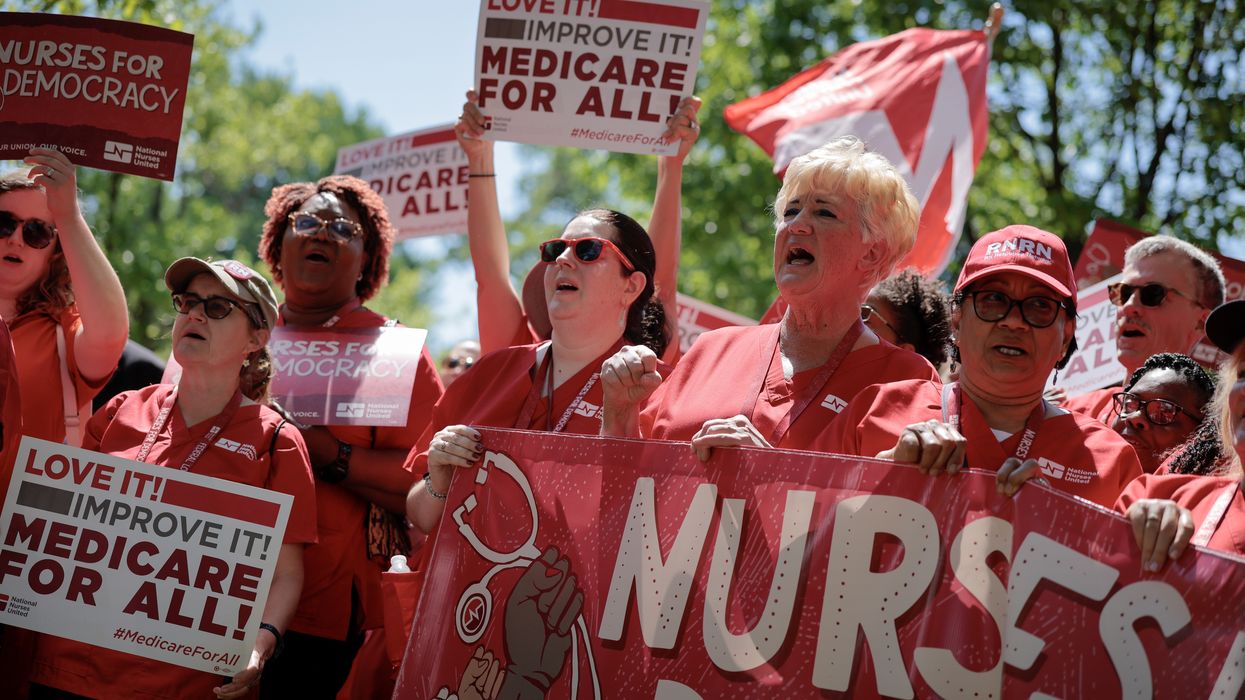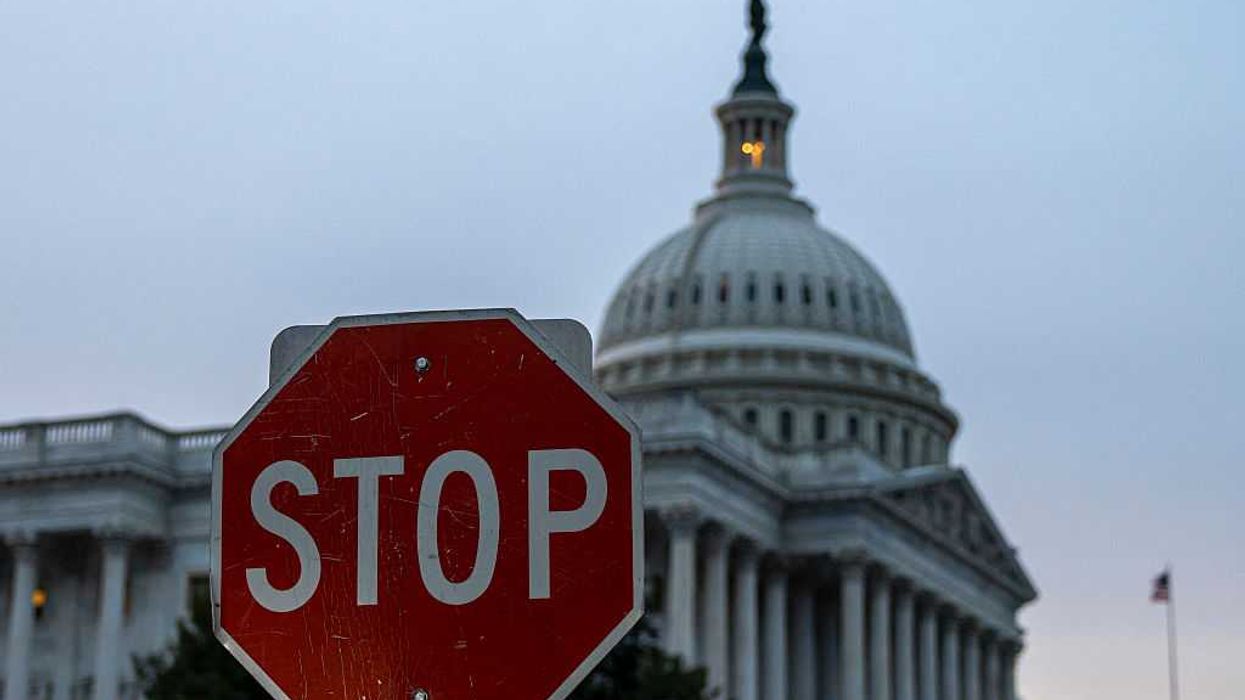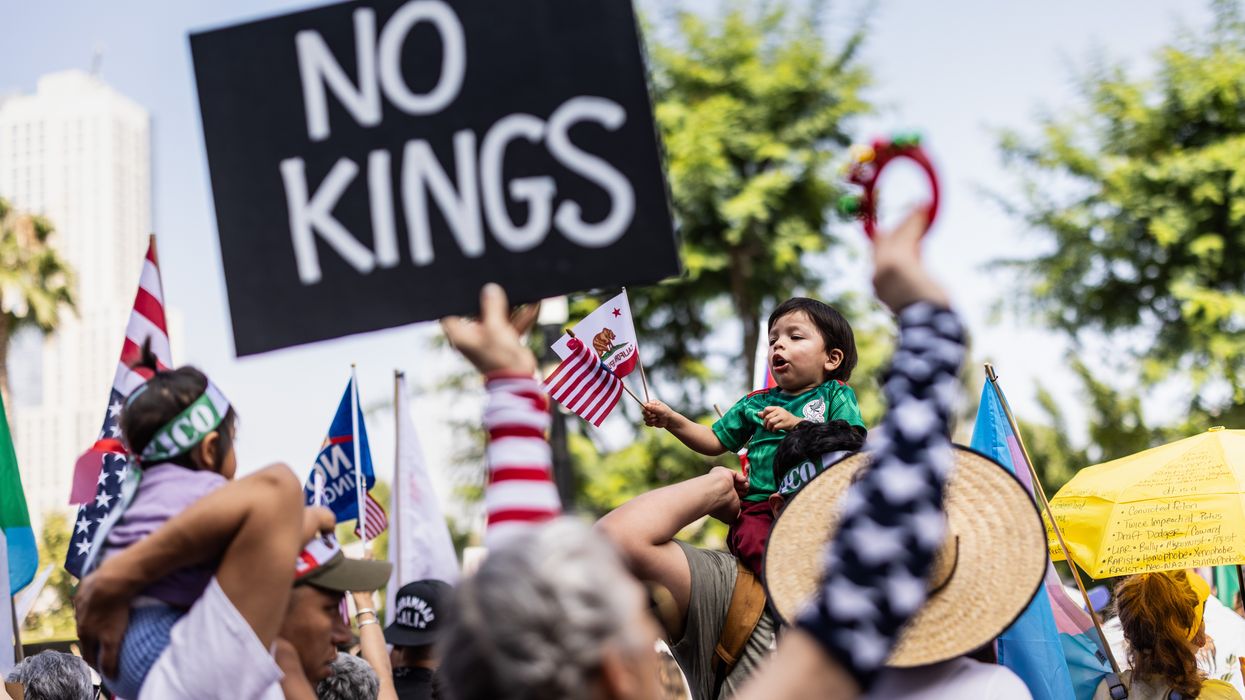Medicare for All Backers Argue It's a Better Solution Than Whatever Trump Is Cooking Up
"Republicans have a million ideas regarding healthcare. Except one," said Sen. Bernie Sanders. "They will never acknowledge that healthcare is a human right—to be guaranteed to ALL."
As President Donald Trump postpones unveiling his supposed plan to tackle soaring US healthcare costs—reportedly after pushback from congressional Republicans—Medicare for All advocates have renewed calls for shifting to a single-payer system.
"Republicans have a million ideas regarding healthcare. Except one," Sen. Bernie Sanders (I-Vt.), who caucuses with Democrats, said on social media Monday afternoon. "They will never acknowledge that healthcare is a human right—to be guaranteed to ALL."
The union National Nurses United also called for Medicare for All on Monday, pointing to a recent West Health/Gallup poll that found 47% of US adults are worried they won't be able to afford healthcare next year, the highest level since they began tracking in 2021.
"The urgency around this is real," West Health president Timothy Lash told NBC News. "When you look at the economic strain that is on families right now, even if healthcare prices didn't rise, the costs are rising elsewhere, which only exacerbates the problem."
Over objections from progressives, including Sanders, a small group of Senate Democrats earlier this month agreed to help GOP lawmakers end the longest federal government shutdown in US history in exchange for just the promise of a mid-December vote on extending Affordable Care Act (ACA) subsidies to help over 20 million Americans who face skyrocketing premiums.
Citing unnamed White House officials, MS NOW reported Sunday that Trump was set to introduce the Healthcare Price Cuts Act to combat what the sources called "surprise premium hikes" as soon as Monday.
"The plan would also eliminate 'zero-premium' subsidies currently offered under the ACA, intending to stop 'ghost beneficiaries,' a frequent Republican concern about alleged fraudulent policy recipients, by requiring a small minimum payment as a means to verify eligibility to receive benefits," according to the outlet.
"The nascent plan also features a deposit program that would incentivize lower-premium options on the ACA exchange," MS NOW continued. "For individuals who downgrade coverage, the difference in coverage costs would be distributed to a 'Health Savings Account' provided with taxpayer dollars."
However, as Politico detailed Monday, also citing unnamed sources, "Trump's healthcare plan is in limbo after pushback from Republicans who were caught off guard by the president's forthcoming proposal—questioning, in particular, whether it would include additional abortion restrictions."
As parts of Trump's proposal continued to leak in the absence of its formal introduction, the American Prospect's Ryan Cooper and David Dayen wrote Tuesday that "all told, there's a good chance that Democrats will accept this offer, or something like it, as the best they're likely to get for the time being."
"If they are ever in power again, they can fix the ACA permanently, and avoid the danger of subsidies expiring (as the Prospect advocated back in 2021). But it's quite revealing as to the total bankruptcy of the Republican Party when it comes to healthcare policy," the duo added. "The GOP will flinch from more than doubling health insurance premiums—at least if middle-class people and up are the most affected—but only if they can also make the insurance worse, and make poor people pay more."
Last week, in a pair of op-eds and a letter to Democratic lawmakers, Sanders argued that "at a time when the Republicans have been forced to finally talk about the healthcare crisis facing our country, it is essential that the Democratic Caucus unify behind a set of commonsense policies that will make healthcare more affordable and accessible."
He called for not only extending the ACA tax credits, but also repealing Trump and congressional Republicans' $1 trillion in cuts to the ACA and Medicaid; expanding Medicare to cover dental, vision, and hearing; cutting prescription drug costs by requiring pharmaceutical companies to charge no more for medications in the United States than they do in Europe or Canada; investing in expanding primary healthcare; and banning stock buybacks and dividends, and restricting CEO compensation.
Although Medicare for All lacks majority support in the Democratic Caucus, Sanders—the ranking member of the Senate Committee on Health, Education, Labor, and Pensions—also emphasized his belief that it remains the ideal long-term solution. He reintroduced the Medicare for All Act in April with Democratic Reps. Pramila Jayapal (Wash.) and Debbie Dingell (Mich.).
Other single-payer advocates have also seized on current concerns and debates about the ACA. In a column for Truthdig last Thursday, Conor Lynch wrote that "with Republicans spotlighting the greed, corruption, and inefficiency of US healthcare, progressive Democrats have an opening to take Medicare for All off the back burner and renew the push for a comprehensive overhaul."
"The fact that Republicans are calling out insurance companies for their profiteering shows how much the national mood has changed since the passage of the ACA," he continued. "With Republicans unable to offer anything but a return to an intolerable status quo ante, Democrats should make the case for moving beyond the broken status quo."
The previous week, CJ Mikkelsen, a retired firefighter and paramedic now leading a small nonprofit in Michigan, made the case in the Midland Daily News that "we need a system like every other country in the developed world has."
Mikkelsen shared some of his and his wife's health struggles and stressed the society-wide benefits: "Medicare for All would mean that everyone is covered for everything at all times. No more losing coverage because you’ve lost your job, want to go back to school, or are starting your own business. The last thing I want you to know about Medicare for All, and pay attention here—IT’S CHEAPER THAN WHAT WE'RE DOING NOW."


